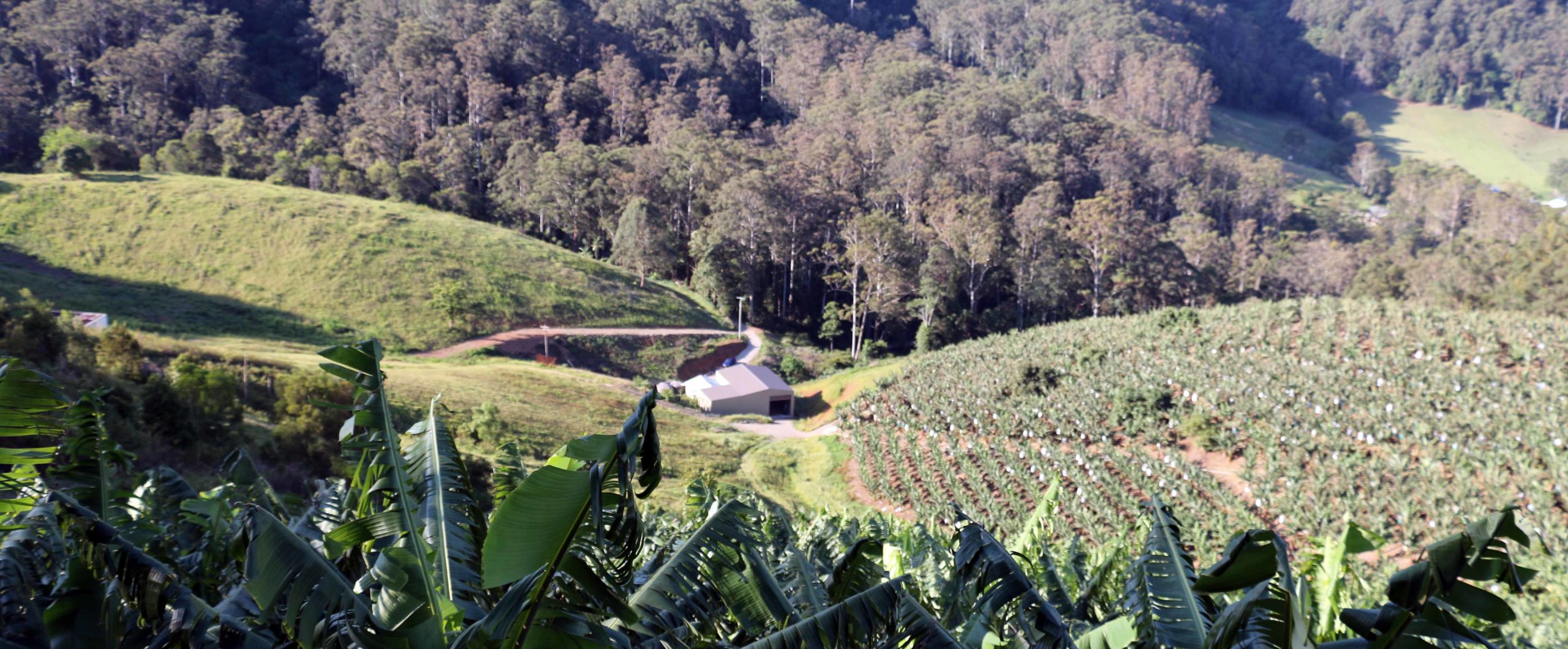This section of our website has been developed to provide subtropical banana growers with information and resources developed specifically to address the production challenges faced in their regions.

About the subtropical industry
Australia’s subtropical banana growing regions extend from just south of Coffs Harbour in northern New South Wales up to Bundaberg in southern Queensland, and in the west includes the production region of Carnarvon. Combined, subtropical banana production accounts for 6% (New South Wales 4% and Carnarvon 2%) of the national industry, with a mixture of both Lady Finger and Cavendish banana varieties predominately grown.
Unlike the tropical growing regions in the north, subtropical banana growers are impacted more by the seasonal influence of cold weather and cold-induced plant stress. Relatively low rainfall in these subtropical regions during winter in combination with the cold temperatures can exacerbate the effects of cold conditions.
For subtropical growers in New South Wales and Queensland, steeper terrain also proves challenging in terms of the mechanisation of farming systems for increased efficiency and limits the use of irrigation. These constraints can increase the difficulty of maintaining consistent fruit quality throughout the year and result in a decrease in overall yield.
Presence of Panama disease in subtropical growing regions
The subtropical growing regions of New South Wales, Queensland and Western Australia are also affected by Panama disease caused by the fungus Fusarium oxysporum f.sp. cubense.
Panama disease race 1 is present in all subtropical growing regions and infects Lady finger, Ducasse and Sugar banana varieties but not Cavendish bananas. Race 2 has been detected in northern New South Wales and infects cooking bananas such as Bluggoe and Blue Java. Panama disease subtropical race 4 is also present in all subtropical growing regions and infects most banana varieties including Cavendish cultivars, particularly after being exposed to a period of environmental stress. Subtropical race 4 is less virulent than Panama disease tropical race 4, which is under strict quarantine in the tropical growing regions of the Northern Territory and Far North Queensland. It is important that all banana growers implement good on-farm biosecurity measures to minimise the risk of further spread of the disease and potential introduction of Panama disease tropical race 4.
Banana bunchy top virus
Northern NSW and South East Queensland is also actively managing Banana Bunchy Top Virus (BBTV), a serious plant pest that is regulated in both states. BBTV is spread from plant to plant by the banana aphid Pentalonia nigronervosa. Banana plants infected with BBTV rarely produce fruit. If a bunch is produced it is usually small, deformed and unmarketable. Industry continues to invest in a National Banana Bunchy Top Virus program that runs in South East Queensland and Northern New South Wales to contain and control the disease within the known bunchy top zone and prevent its spread to other production regions. Click here for more information.
